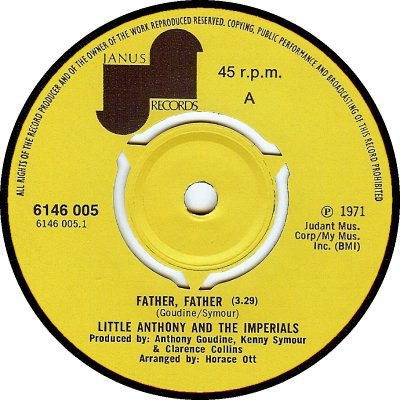
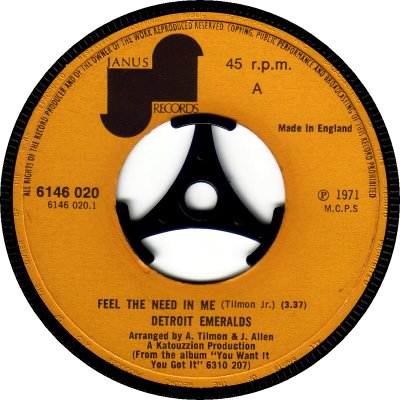
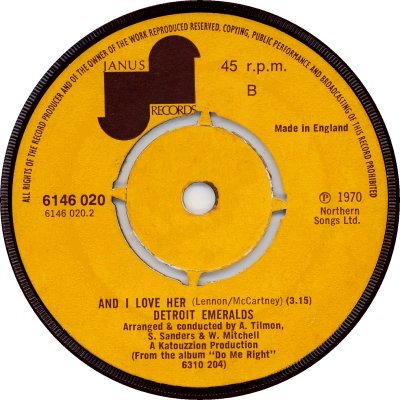
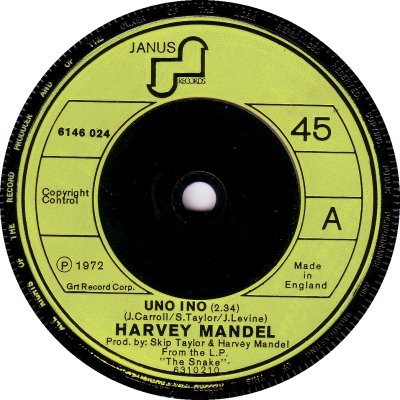
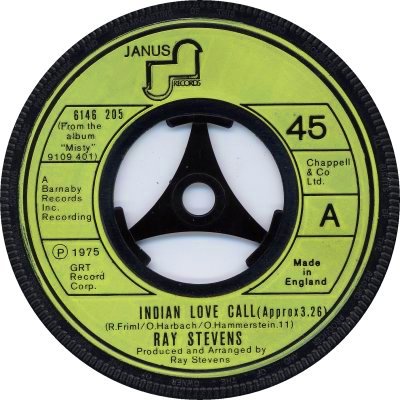
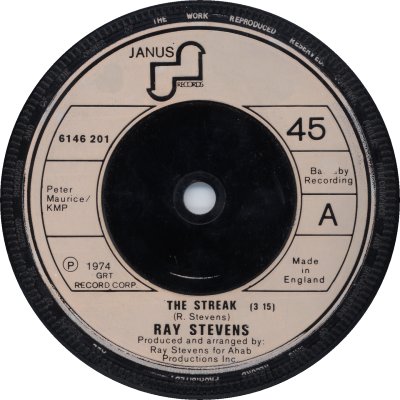
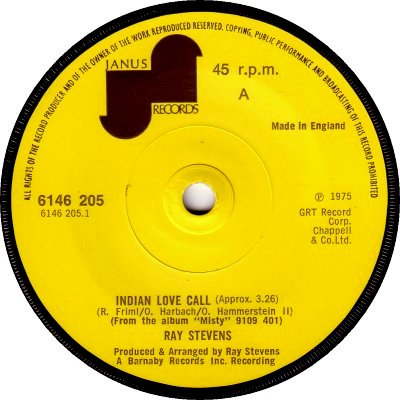
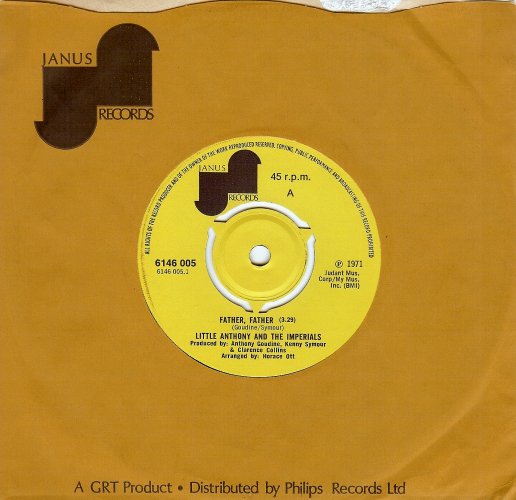
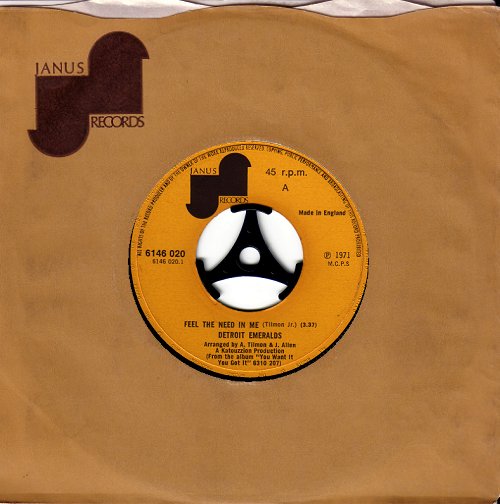
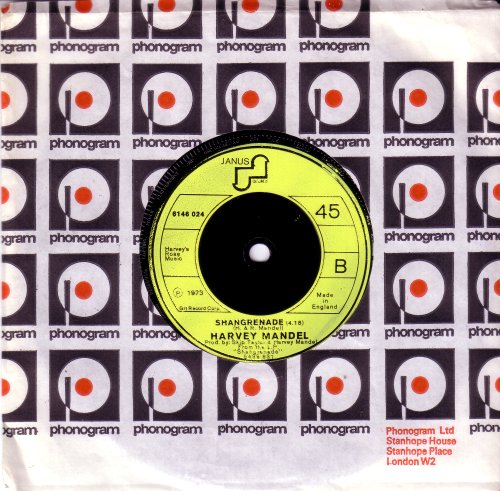
Janus was formed in the summer of 1969 as a joint venture between Pye Records and the American company GRT. Its aim was to provide an outlet for Pye product in the States, and to provide American product for release by Pye in the UK. 'Music Week' of the 23rd of June reported that Janus might possibly have its own label identity in Britain at some point, but that in the meantime its records would be going out on the Pye International label. The plan changed before long: 'MW' of the 7th of November said that from January 1971 Janus material would be issued on Dawn instead of Pye International. That arrangement, too, was destined to be short-lived. GRT and Pye parted company in May 1971; Pye bought out GRT's shares in the jointly-owned Precision cassette tape duplicating plant, while GRT gained sole ownership of Janus ('MW', 22nd May 1971). The article in 'MW' which dealt with the break stated that while a fair amount of material had gone from Pye to Janus in America not much had come in the reverse direction.
The break with Pye left Janus free to look for another outlet for its records in the UK. In its homeland it had recently been grouped with Chess (q.v.) and GRT into a new organization, the GRT Records Group, headed by Marvin Schlachter ('Billboard', 13th March), and the sister-labels Janus and Chess found a new home together in the UK at Philips Records in September 1971 ('MW', 24th June). It was at that point that Janus first gained its own label identity here. It enjoyed its first hit when the Detroit Emeralds got into the Top 5 with 'Feel The Need In Me' (6146-020) early in 1972; Ray Stevens improved on that, getting to No.1 with 'The Streak' (6146-201; 1974), No.2 with 'Misty' (6146-204; 1975), and No.34 with 'Indian Love Call' (6146-205; 1975). Several of the other acts on Janus's books - Funkadelic, The Ohio Platers and The Whispers - went on to have hits in Britain after leaving the company, so the potential for success was there. In September 1975 Janus and Chess were sold to All Platinum Records and were absorbed by that company. There were two more releases on Janus in 1976, but they proved to be the last.
With it being part of the Philips group, Janus's records were manufactured and distributed by the joint Philips (Phonogram) / Polydor enterprise Phonodisc, which explains why early releases have paper labels and later ones are injection-moulded - most of Phonodisc's products followed that pattern. Phonodisc records tended to have catalogue numbers in seven-number series, and Janus's numbers were no exception, being in the 6146-000s. A 6146-200 series joined this in 1974. The first five releases, from 1971, have yellowish labels (1); the colour turned fawn at the start of 1972 (2). Some of the earlier singles can be found in both colours, presumably as a result of re-pressings. Occasionally there were custom pressings of popular singles; a record's having four dinking perforations instead of the usual Philips / Phonogram three is one indication of these 'foreigners'. The example shown was manufactured by Pye (3). Injection moulded singles became the norm with 6146-022, in June 1973; they were mainly yellow-green but there were some pinkish-brown ones. The occasional paper-labelled single slipped out now and again, presumably again as a custom pressing by another company (7). Singles with large spindle holes often left the factory in that condition and were supplied with 'spider' adaptors. Until 1973 Janus singles had their own company sleeves (8, 9), but from that time onwards they shared the common Phonogram Group ones (10). Ray Stevens's 'The Streak' (6146-201) can also be found on the Chess label, with the same catalogue number. Thanks to Robert Bowes for the scan of the Little Anthony single and its sleeve.
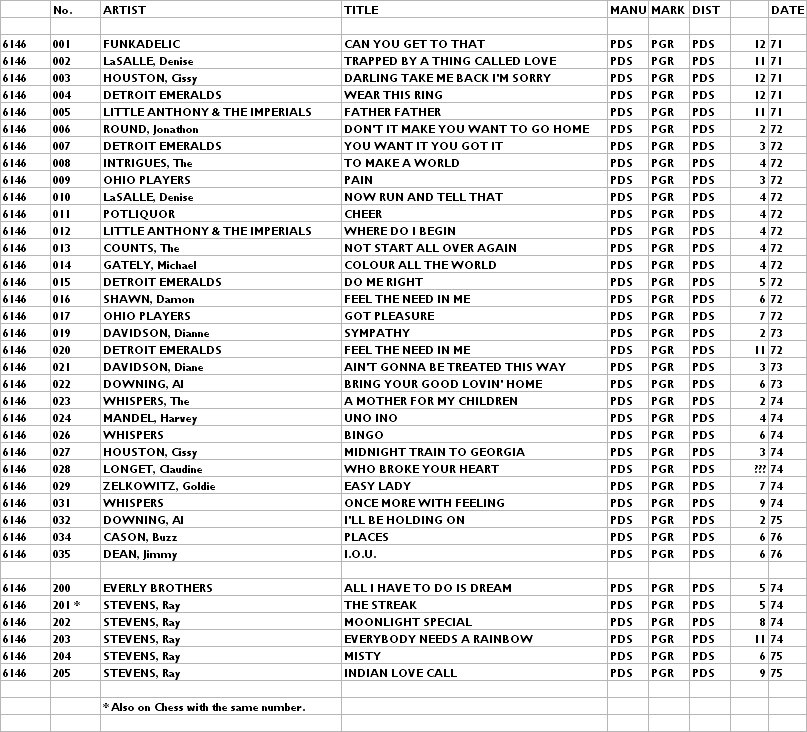


Copyright 2006 Robert Lyons.

